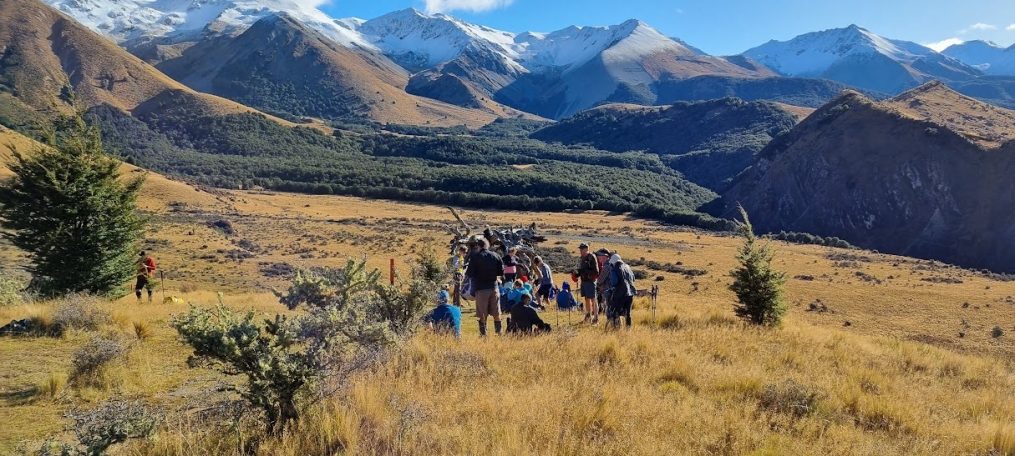| Leader | Mentor | Understudy | Tail Ender | |
| Standards | Graham W | Jan Br | Brent | Frank |
| Alternates | Ray | Daphne | Ali | Eric |
Distance:12.5km Elevation gain: 600m Total time: 4hrs 15mins
An eager group of trampers alighted from the bus at PMH where they were joined by a smaller group including visitor Nicky C waiting in the carpark.
At 9.15am the groups set off, Alternates following the Standards as they steadily made their way up the short track to Lady Polson Lane. Surrounded by a variety of fruit and nut trees, we passed by the Cracroft Caverns. The Caverns had been secretly constructed during World War 2 when, in the event of an attack, they were to be used as South Island operational headquarters. Following the war the Caverns remained largely forgotten until their chance discovery in 1987. More recently they provided a stable environment for the University of Canterbury’s ring laser laboratory measuring variations in the earth’s rotation. The Caverns have been closed to the public since the Canterbury earthquakes.
On Lady Polson Lane one sharp-eyed member of the group observed a gorgeous specimen of purple autumn crocus. (The deceased hedgehog in the adjoining gutter didn’t receive such positive attention). From Hackthorne Road, we made our way up to Cracroft Reserve and the Sign of the Takahē continuing uphill to Victoria Park, where we stopped at the top for morning tea.
Back on the track we paused to observe the awful devastation caused by the recent bush fires on the Port Hills. On Latter’s Spur Track we climbed through native bush to a rocky spur with spectacular views across Lyttelton Harbour. From there we continued along to Mitchell’s Track (which is part of the Crater Rim Walkway) to Scott’s Reserve where our leader Ray found a perfect lunch spot providing a great view of the valley and shelter from the wind.
After a convivial lunch, the eight intrepid Alternates descended the Bowenvale Valley Track. En route we were entertained by the sight of two mobs of sheep being mustered by clever, fearless and obedient dogs under the command of their respective owners.
Forty five minutes later the Alternates group reached the end of their descent at Bowenvale Avenue where the Standards were waiting by the bus. To complete a very enjoyable day, we adjourned to the Brickworks for refreshments before heading back to the bus.
Thanks to Frank for providing us with chocolates celebrating his birthday and to Marie-Therese for hers in celebration of the arrival of her latest grand daughter. Thank you to Stuart our bus driver for the day.
Text by Margaret C




































































